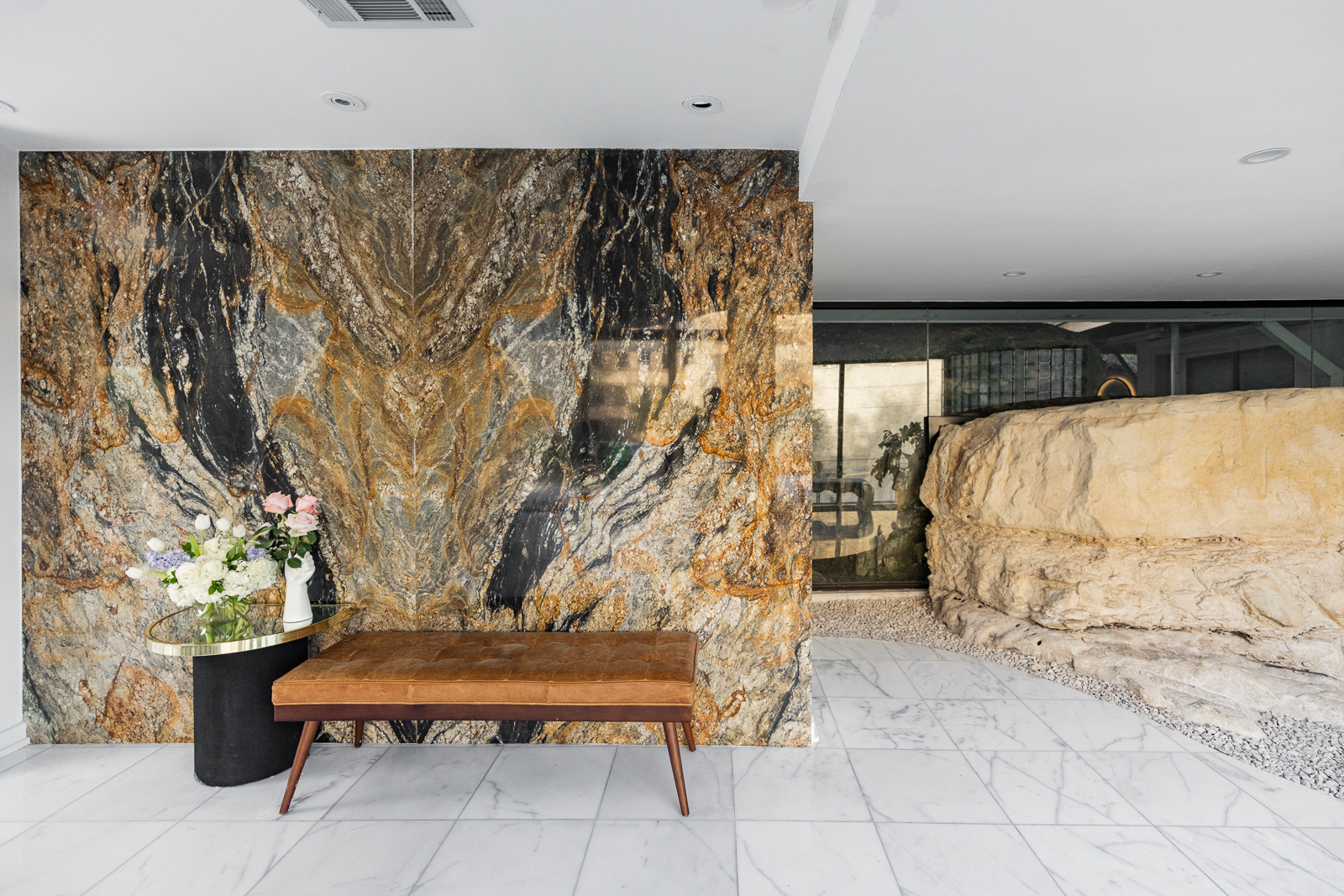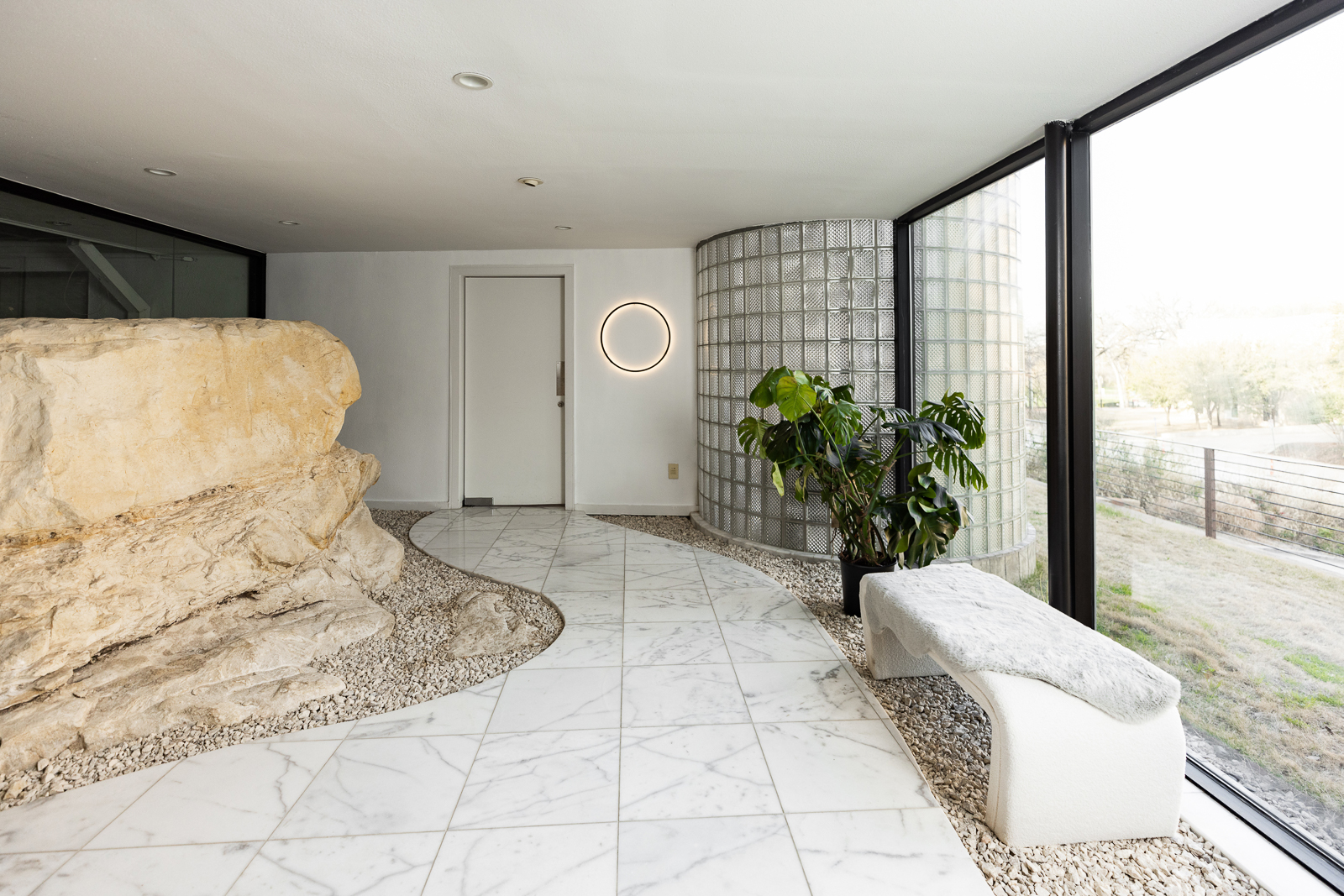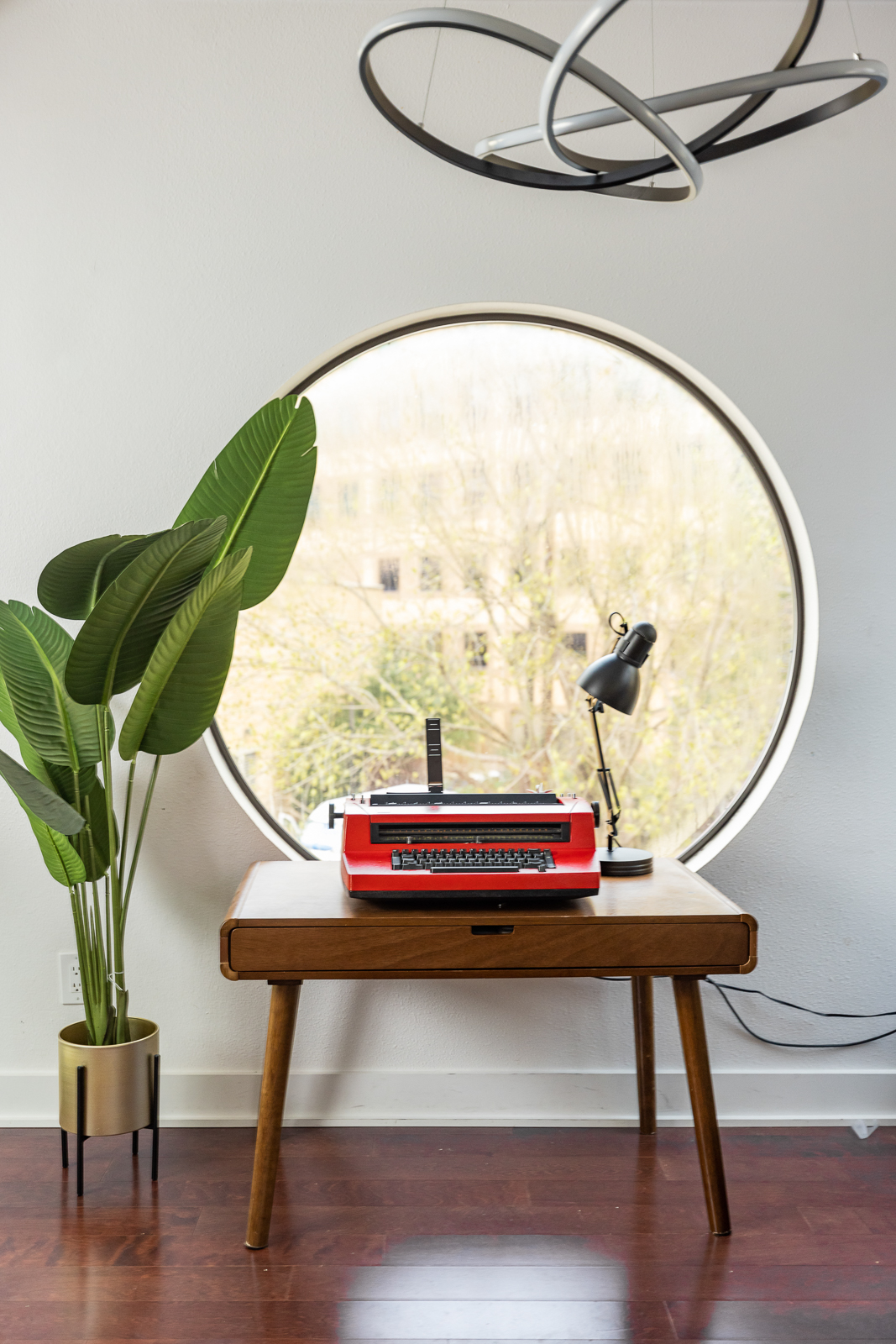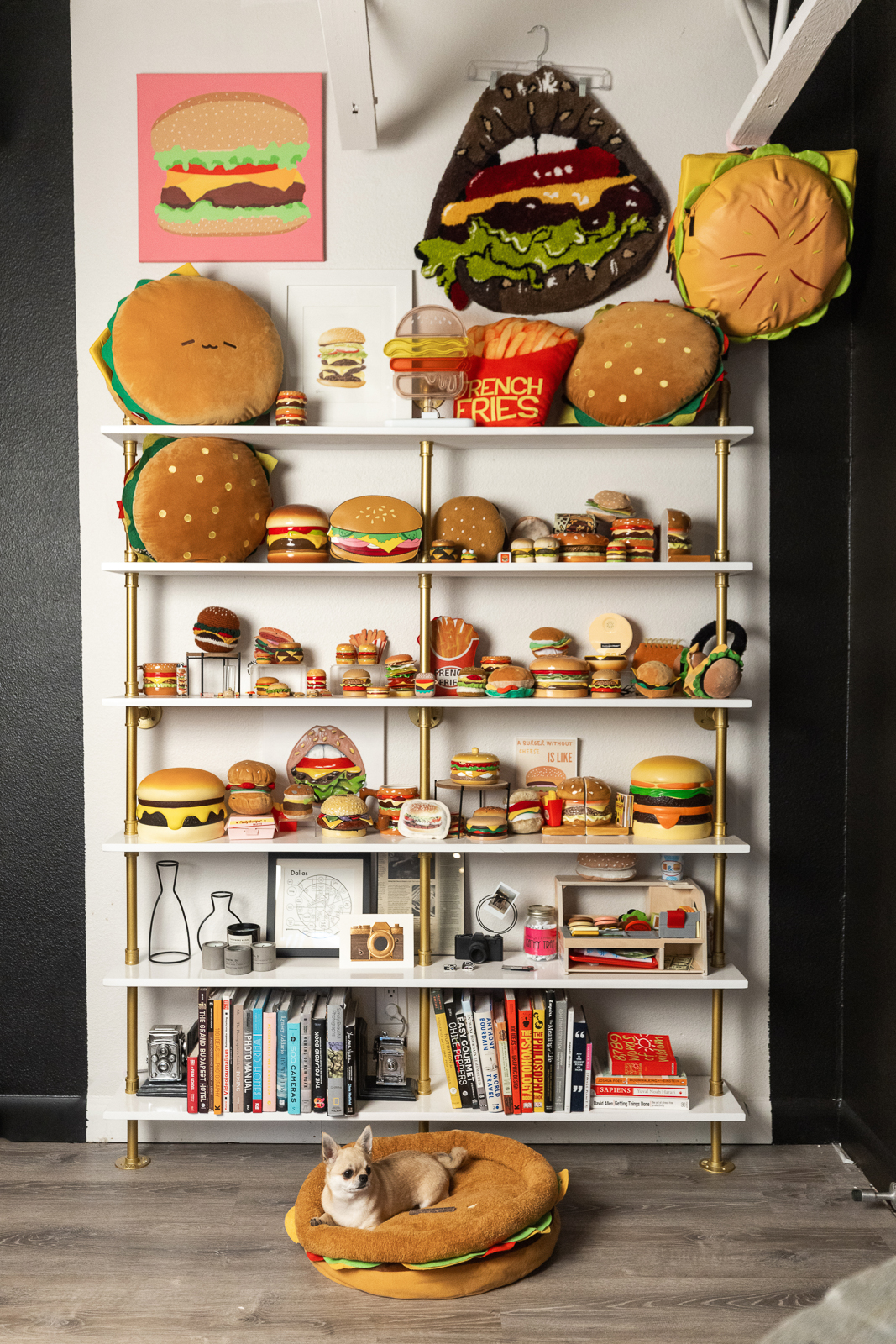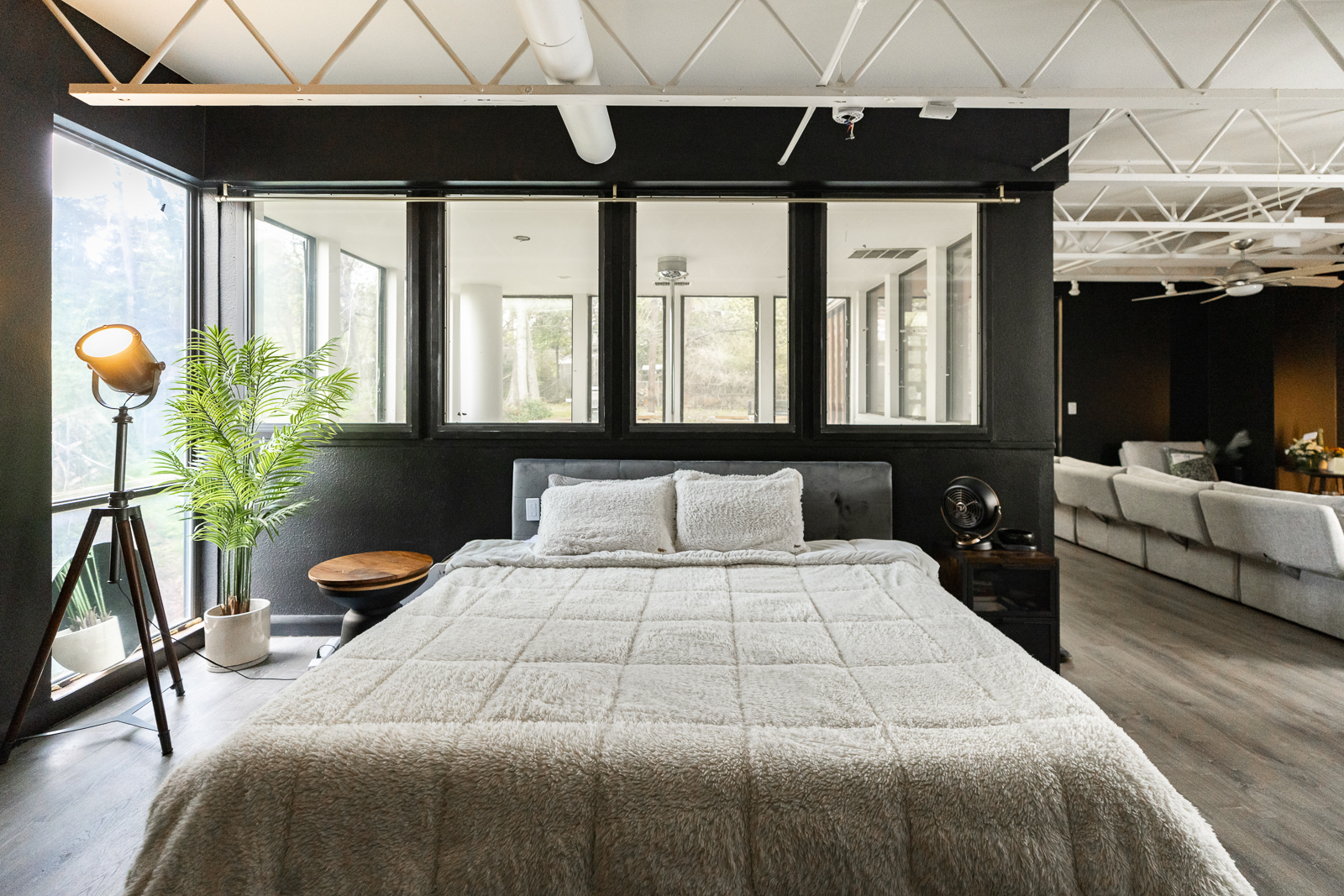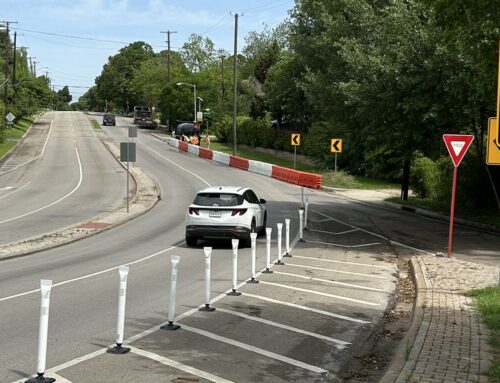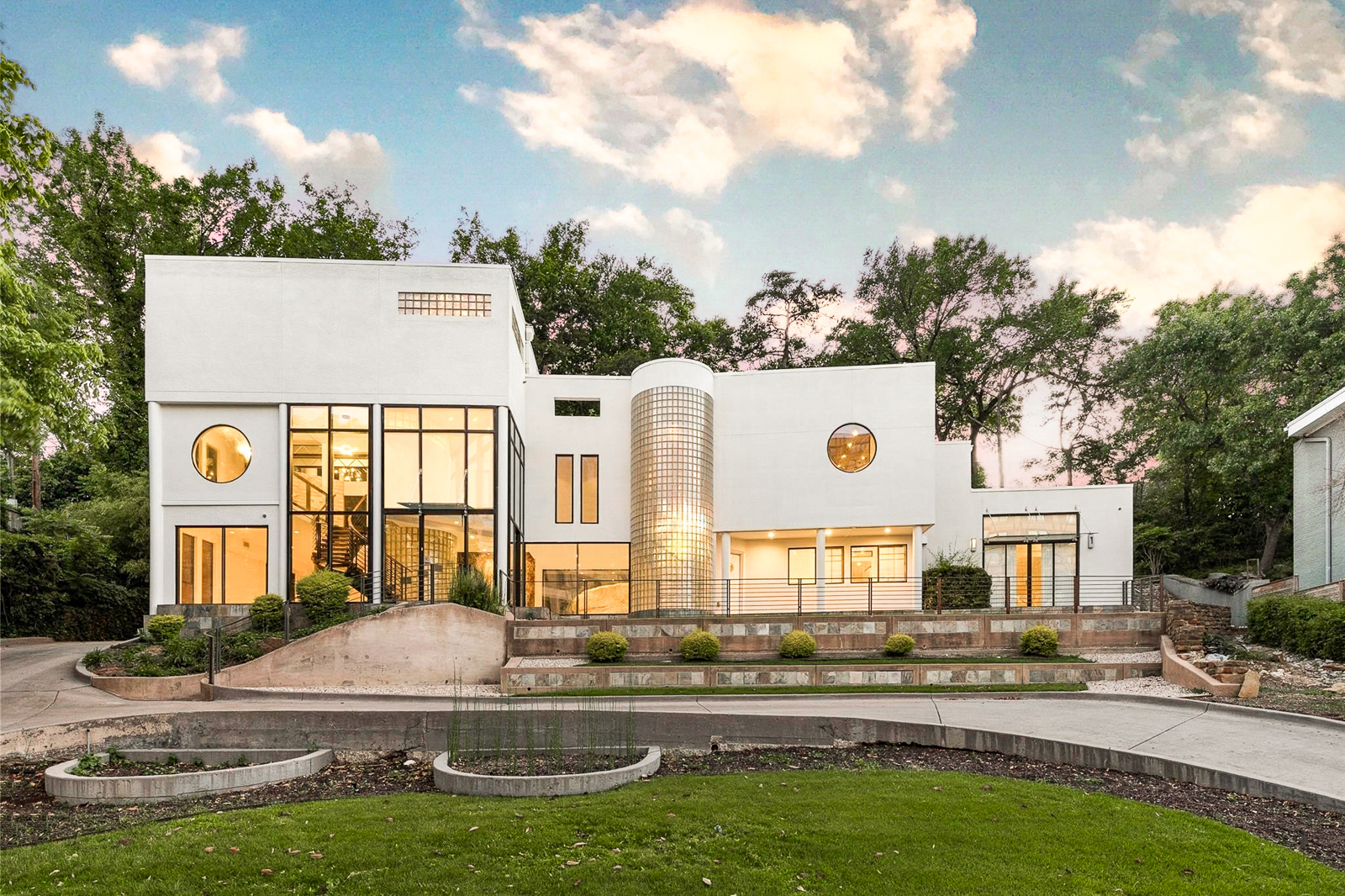
In 1986, a photographer and an artist decided to build two houses — one for living and one for art.
The two-story stucco structures have glass block, large circle windows and a maze of winding stairs and decked bridges connecting the two buildings. Obsessed with Hawaii, the couple eventually moved, or so East Kessler neighbors say.
In 2007, the next couple bought the structures. They decided to merge the two buildings, enclosing a jagged portion of the limestone cliff. The photo studio with floor-to-ceiling windows became a master bedroom with an ensuite laden in marble. They spent hundreds of thousands of dollars in renovations. Yet they never updated the electrical panel, which had all the markings of a full photo studio.
In a full-circle moment, photographer Kathy Tran and writer Daniel Rockey came across the Art Deco house in 2022. They hadn’t planned on buying a house for three to five years. They had been looking for a warehouse, but those are rare and expensive in Dallas. It was tight in their 1,600-square-foot Deep Ellum loft that doubled as a photo studio, but they were eventually planning to build a container home that compartmentalized both their work and personal lives.
This Haines Avenue house was literally made by a photographer who wanted to work and live in the same space.
“We loved it so much,” Tran says. “We put in the bid that same night.”
An investment group already had made a bid, so Tran and Rockey decided to overbid to clinch the deal.
And 36 years later, the lot on the right once again is a photo studio, and the lot on the left, a home for a photographer.
It’s not often that a 29-year-old photographer owns a $1.1 million compound, neighbored by doctors and Mark Cuban’s lawyer.
“When I got this house, I looked around. I was like, ‘Jesus Christ, this is how much I’ve been working?’ I had no idea that I was going to be able to afford something like this at 28 years old,” Tran says.
Tran has been handling three to four photoshoots a day every day for more than a decade. She has been hustling since she was a child, living in Richardson. She grew up in a strict, traditional Vietnamese household with what she describes as an abusive, alcoholic father. Her blue-collar parents worked long, hard hours trying to make ends meet.
“I was the firstborn. They really had their eyes on me,” she says. “So, I was rebellious. I was looking for love in all the wrong places.”
After getting pregnant at 13 in a statutory rape case with a 22-year-old (he went to jail), she was homeless and got herself emancipated as a minor.
“I forget that a lot of people don’t know that about me. They don’t know where I’m coming from because I went through all the hardships when I was younger — pregnant, raped, abused, homeless,” Tran says. “I just felt so powerless. For the rest of my life, I’ll have my own independence and control over my own life.”
Her former middle school counselor opened her home to Tran. First, she was spending one night there, then two, three nights a week. Then she was adopted.
“And then it ended up being where my white dad and I were painting my own room,” Tran says. “And that was like a very dad and daughter thing that I’ve always wanted.”
Her Asian and American families blended into one, she says, celebrating milestones and holidays as one unit.
“I went from living in the ’hood to a gated community. There was a lot of changes for me to see,” Tran says. “I’ve lived my life in opposites.”
Always drawn to art, she went to a magnet school beginning in seventh grade. Her American parents took her to museums and pushed her to explore the arts. She dabbled in other art forms, but paintings don’t dry fast enough, and art is often a lonely experience. Photography is fast-paced, filled with human interaction.
By the time she started at a Dallas Community College, she had built a business shooting portraits and weddings. Plans to transfer to Southern Methodist University to study advertising eventually faded. One, she needed to take care of invoices and clients instead of studying lecture notes. Perhaps more importantly, she realized advertising wasn’t for her. She loved photojournalism.
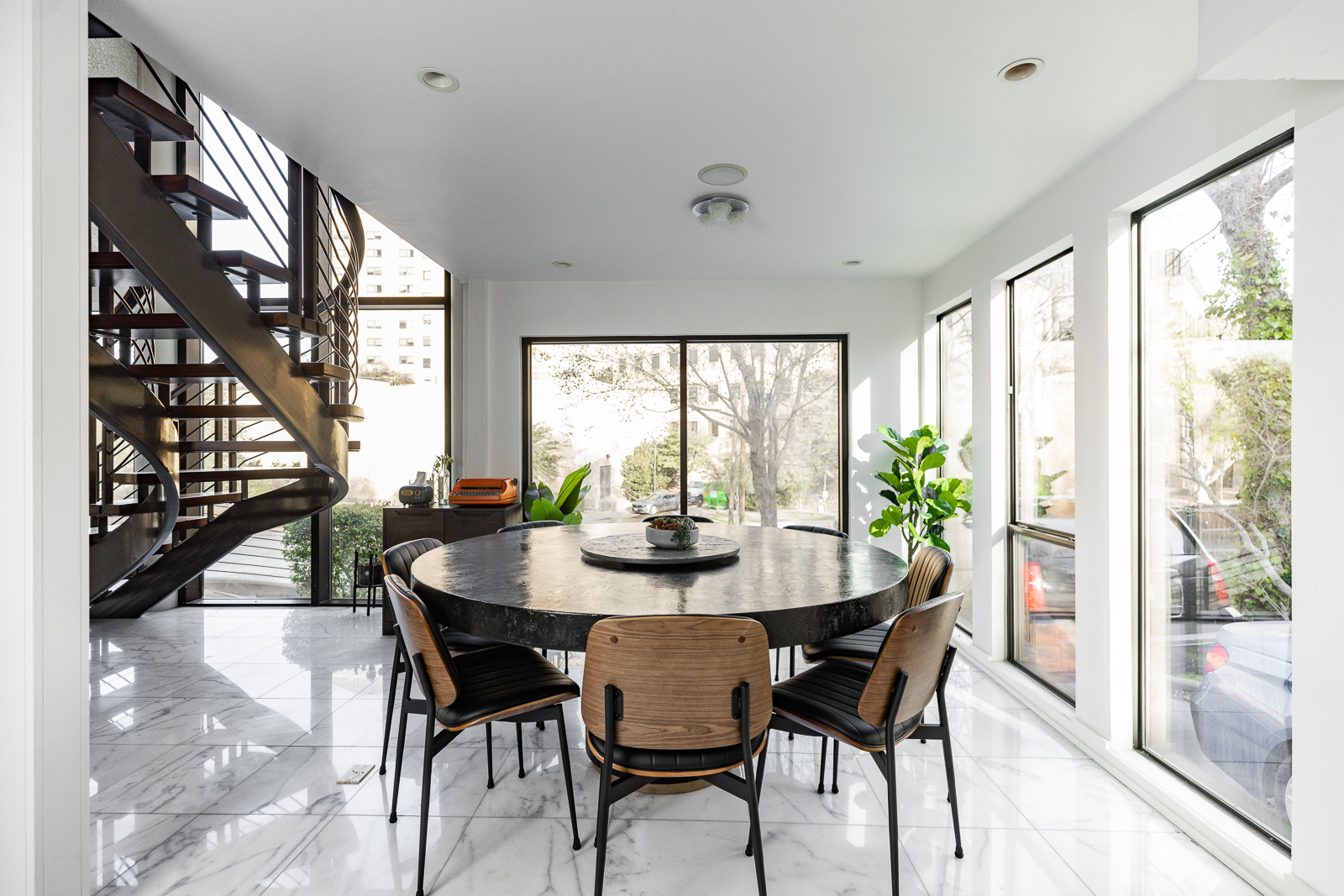
Hard news, protests, street style, concerts, she was shooting it all. Central Track was her first journalism client. Then she heard the food photographer at the Dallas Observer had left. Tran drove to the editor’s house and said she wanted to do the food photography.
That’s when her career shifted.
Food became her bread and butter. This is a city that eats. A restaurant that needs photos for marketing pops up almost every week, and the metroplex is littered with food-oriented corporations.
She’d eat leftover food from shoots for sustenance, so she never really learned to cook. The first time she invited Rockey over to her home, she pulled out a smorgasbord of 10 different types of cuisine.
“I think like a month before I met him, I was like, alright, I’m gonna try cooking. And I think God was like, ‘Thank you for trying. Here is your man,’” Tran says.
They had matched on Tinder while Tran was hanging around University of Dallas’ engineering school — she figured she was going to end up with an engineer and decided that was the best place to find them. Rockey, a Frito Lay food scientist and chef, happened to be visiting his engineer brother.
Eventually, Rockey left his corporate job to join the Kathy Tran team as a videographer, food stylist, writer and editor. The first few years they were together, he’d write the stories, and she’d shoot the photos.
Most, if not all, of her original clients in the hungry years are still with her. (This includes the Advocate, for which Tran has worked as a freelance photographer for the past 10 years.) The Kathy Tran team is Rockey, Tran and two other staff members. They’re working three to four shoots a day still.
But it’s a new season for them. The house is just one part of it.
There are the normal quirks of owning a house built into the side of a cliff that was originally two separate buildings. There may not actually be a single straight wall in the 4,601-square-foot house. A little mix-up had the city shut off their water because records hadn’t been updated to reflect the buildings were combined. And an air conditioning hullabaloo.
“If you take the whole thing and put into the wash, it comes out fine still,” Rockey says.
He built a wall to turn a space into a guest room. They made the three-story spiral staircase dog-safe. They’re working through the cosmetic changes. Painting the kitchen black is on the short list. The bathroom in their treehouse-like master suite needs to be gutted of the hot tub and mauve tiles. The next big project is building out the deck to even out the terrain, so they can have a backyard wedding with the Dallas’ skyline as a backdrop.
Rockey’s mother and one of their best friends live with them in the house. A friend with an education-based nonprofit is renting one of the larger spaces to work out of. When her father was in the throes of dementia, her Asian parents moved into one of the rooms. The six-bedroom, six-bathroom house makes it feasible.
“I just love being able to have these different lives in here, that live a different pace,” Tran says. “And I think it’s like a great reminder of where you are in your life.”
Tran has always had penchant for compounds. Before she and Rockey lived in the loft, she was renting two duplexes.
“I wanted to run this creative community,” Tran says. “This is better than I’ve ever imagined. Because I wouldn’t have designed a layout like this that worked for us. We didn’t know what it was going to look like, but we knew what we wanted it to be.”
Their creative community is wellness-oriented. The team cycles together regularly, and neither Tran nor Rockey drink alcohol. They prefer “aggressively lounging” in their home, surrounded by their people.
“I know I work a lot, but I am very big about having a balanced lifestyle,” Tran says. “I spend a lot of time with family. It’s very half-and-half because I go real hard on both.”
The couple hosts yoga classes in the studio, dubbed Kessler Studio, and neighbors just walk over and walk in. They had an artist showcase with more than 100 guests earlier this year.
It’s all part of the bigger shift into becoming a lifestyle brand. A YouTube channel was launched late last year so she can share her story and the life Rockey and her are building.
“I want to just live my life a little bit more creatively,” she says. “I shoot for so many other people that I want to focus on shooting some things for myself. And I want people to know me better and hire me for who I am.”

